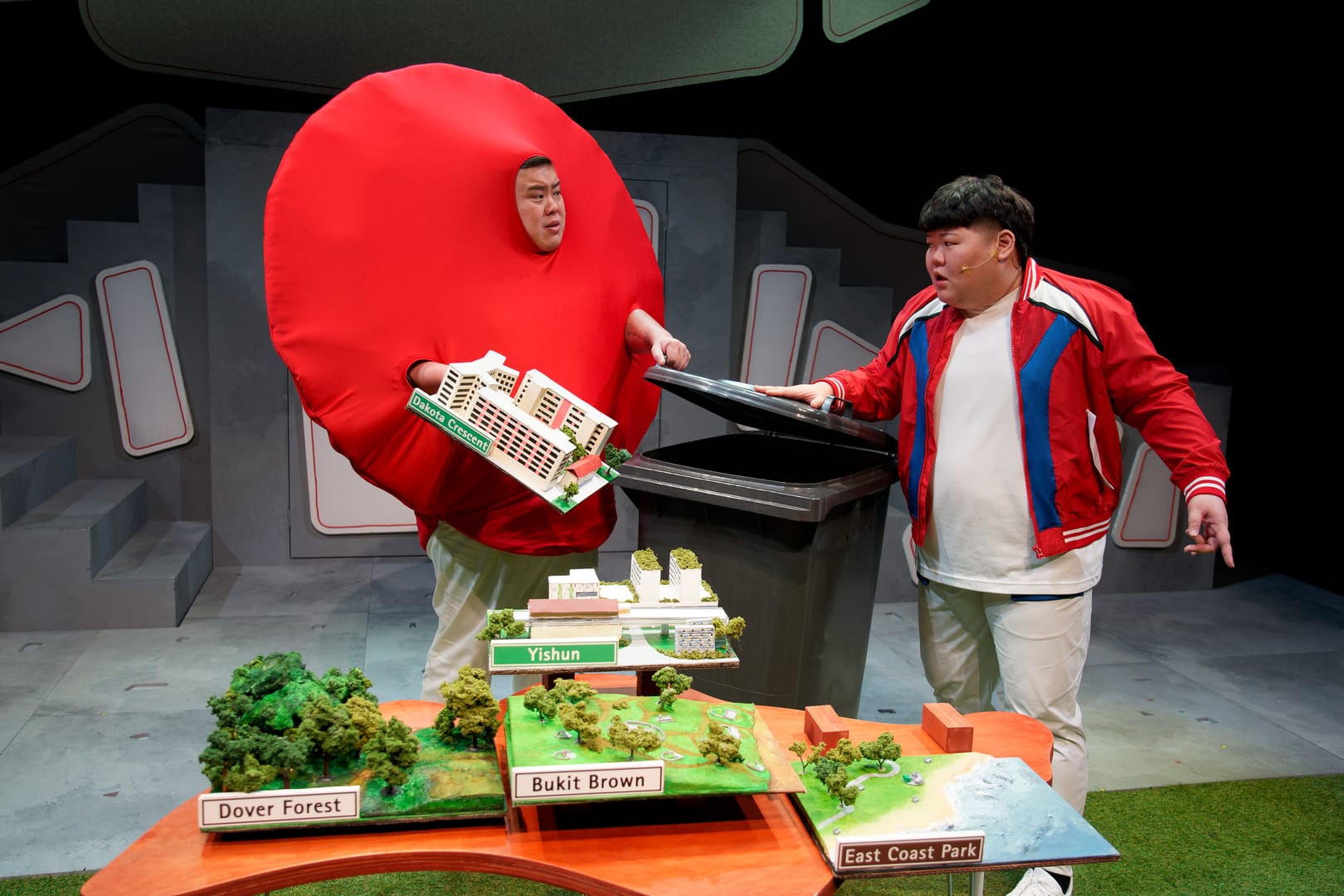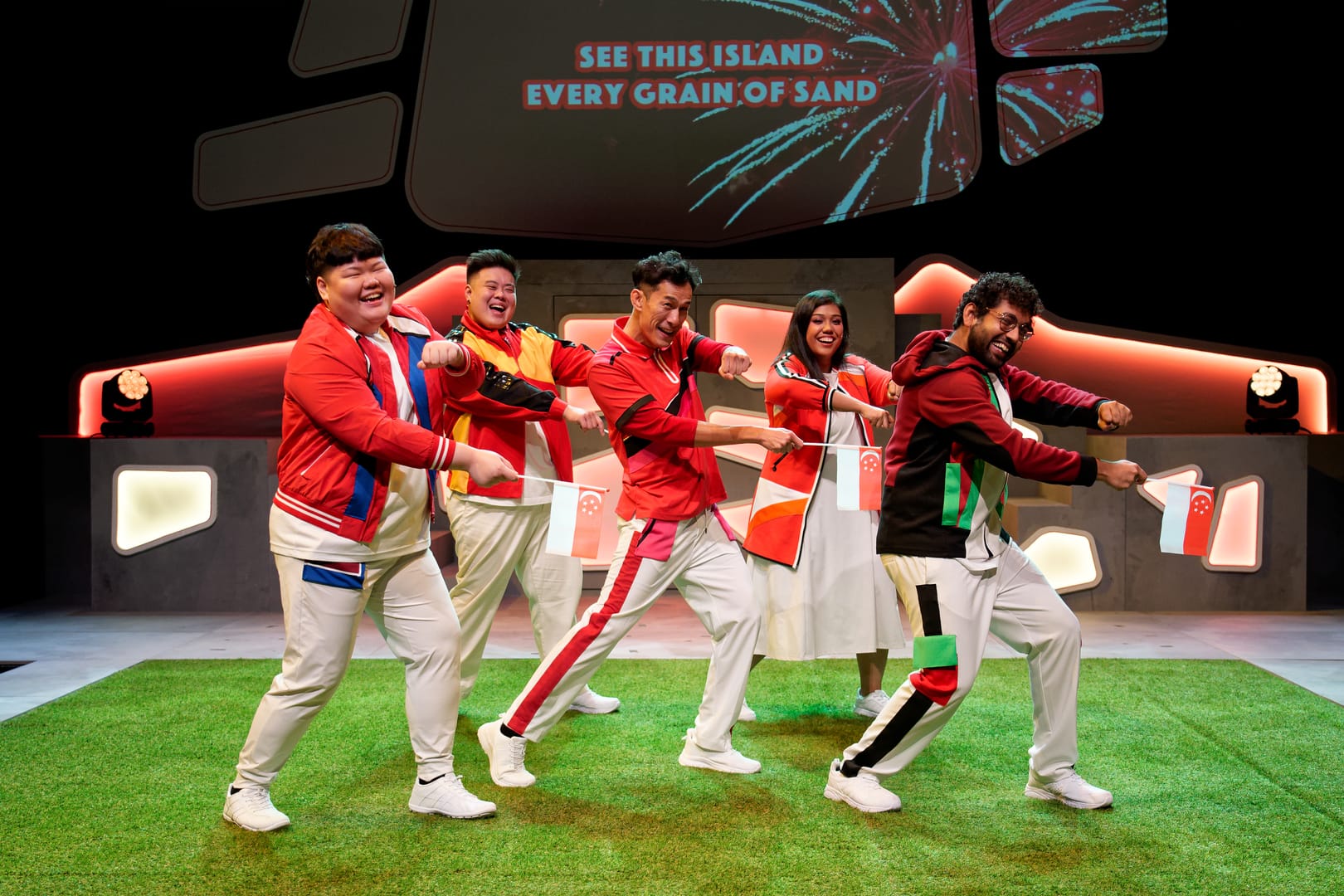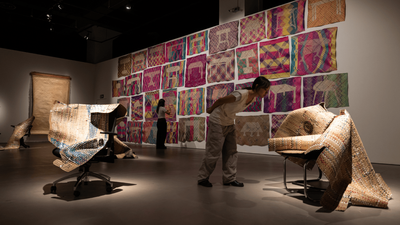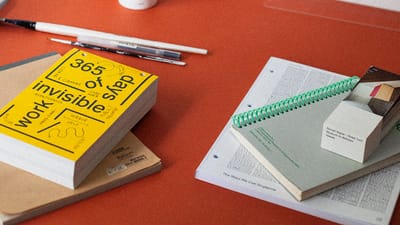Go up to any Singaporean and sing them two words from any National Day song. Go on, I dare you.
“Stand up ____”
“This is ____”
“Count on ____”
“One people, ____”
Well, not every song, I suppose—but those from Singapore’s equivalent of the “Disney Renaissance”, that golden decade of patriotic earworms from the 1980s to the 1990s. Our Pavlovian instincts are strong with these ones, and writer-director Thomas Lim knows it.
To gauge the popularity of our National Day songs, the Singapore University of Technology and Design’s Lee Kuan Yew Centre for Innovative Cities conducted this survey in 2021. Their conclusion about these all-time favourites shouldn’t surprise us: there’s a “reminiscence bump” that sears these tunes into our episodic memory, especially if we’re exposed to them within the first two decades of our lives. Episodic memory, writes psychologist Endel Tulving, can work as a form of “mental time travel”, where we enter a state of consciousness that very much resembles the first time those memories were made. The smell of your childhood bedsheets, the taste of your grandmother’s cooking, the satisfying chord progression of a favourite National Day song. This, researchers speculate, might be how our nostalgia triggers work.
Like chicken pox, nationalism seems at its most contagious when you’re a kid. My sister, a former primary school teacher, once marvelled at her young charges’ uncanny ability to memorise even the more melodically complex tunes—to her, and likely to other adults—that form the contemporary corpus of National Day songs. “Ever wondered why they send you to the Parade when you’re 11?” she said, alluding to the state’s nation-building project. “That’s how they get you.”
Lim knows how to get to you, too. He’s crafted a Saturday Night Live sketch comedy equivalent of the National Day Parade (NDP), and there’s no immunity from its infectiously likeable cast—Andrew Marko, Deonn Yang, Krish Natarajan, Nurulhuda Hassan and Shane Mardjuki—working the crowd furiously in every scene. We’ve got audience participation, musical improvisation, funpack giveaways, bite-sized scenes that mix side-eye humour and hard-hitting histories, and, to cap off the evening, a full-blown karaoke session of National Day songs. Even the most resistant audience members might find this brand of emotional manipulation hard to hold out against.
Decades of ideological cultivation have moulded our call to worship at the liturgical church of the NDP. The parades immediately post-independence were, tellingly, themed “Rugged and Vigorous Singapore” (1967), “Rugged Society” (1968) and “Youth and Discipline” (1969)—all fulfilling then prime minister Lee Kuan Yew’s vision of a singularly hardworking and pragmatic populace that would endure hardship and sacrifice for their country. The 1968 edition, apparently, proceeded under the thunderous auspices of a torrential rainstorm, possibly one of a handful of times it’s rained on National Day. (Mediacorp produced a drama series about this iconic parade in 2012.) In 1974, the parade was broadcast in colour for the first time. The state went on to decentralise various aspects of the parade in the “pocket pageants” of the heartlands, featuring firework displays and the “mobile column” drive-past of military vehicles.
The National Day Songs made their debut in the 1980s, part of a more “populist approach” that reoriented the parade away from regimented marching routines and towards the manicured display of large-scale performances. But how might a state manufacture confidence in a country? They found the perfect person for the job in Hugh Harrison, a Canadian composer and creative producer who was passing through Asia in the 1980s. He later told TODAY that the Singapore government was keen to “get a professional look” on how to “market” national identity formation and so, together with the managing director of the ad company he worked for, put in a bid for a song. They thought “Stand Up for Singapore” would be part of a commercial for nation-building. Harrison has since found the popularity of his songs “mind-boggling”.
Geographer Lily Kong has described the parade—key amongst the state’s many tools of cultural hegemony—as the attempt to develop a “civil religion”. This “exists in a nation when its people believe that their ‘values and beliefs are...superior to those of other nations’ and that their ‘nation [has] a special mission to serve as a model for the rest of the world’”. Singaporean exceptionalism is everywhere, starting with the pre-parade hype-up and singalong, then the fly-past, the march-past, the presidential inspection of the guard-of-honour contingents, the mass dances—that signature blend of military might leavened by the cultural soft touch. The parade’s basic formula has hardly varied over the past two decades, not unlike the comforting familiarity of mass, or other public rituals of worship. There have been changes to components one might describe as modular, or minor, but its structure has retained a longevity we hardly see in other aspects of the nation-state.
There’s a reason why NDP “watch parties” are the success they are, including drag queen Becca D’Bus’s annual “Watch It Wet”, complete with bawdy live commentary and boozy drinking games. These alt-parties, channelling the semi-religious cult following of “The Rocky Horror Picture Show”, rely on the pleasures of predictability: audience call-backs, the garish aesthetics of parade costuming, and a specific vocabulary that functions like a shared script.
It’s a risk-free format for the very approachable “National Day Charade”, which repackages these patriotic touchstones into a primer for both first-timers to the theatre and to the country. An Alternative Singaporean Histories 101, your gateway drug to other works of revisionist history that may be more formally or stylistically intimidating. The consistently high-energy production zips relentlessly between forms and genres. Don’t like a segment? The next one might appeal. You’ll get an interactive bit where the cast sources for inspiration for a new NDP theme song from the audience (prompts yelled out the night I attended included: “POFMA!” “BTO!” “samsui woman!”); then a charming video interview with Prashant Somosundram, general manager of indie cinema The Projector (mimicking the earnest short films of the parade that feature “ordinary Singaporeans”); followed by a renovated vision of the NDP’s volunteer contingents, highlighting nonprofit and activist groups the likes of Transient Workers Count Too (TWC2) and the Transformative Justice Collective (TJC) (replete with a flag featuring that famous smiley face).

The show embarks on a wide-ranging survey of marginal histories and invisible communities; a deep dive isn’t possible here, but that isn’t the point. The punchlines come thick and fast, as do the potted histories. We get the 1960s Nantah student protests in a few minutes, and miniature dioramas of Bukit Brown Cemetery and Dover Forest are quickly shelved in a Mari Kondo-esque decluttering exercise. Lim leans into how the NDP has leveraged pageantry and spectacle as an “effective means of social control”, according to geographers Lily Kong and Brenda Yeoh. The parade’s hyper-endorsement of a particular set of shared values then enforces a particular kind of group cohesion. In their analysis of three decades of the NDP, Kong and Yeoh argue that if “the values that rituals reveal and emphasise are shared values,” then “collective participation in ritual suggests affirmation of those values being celebrated.” As the audience of “National Day Charade”, we’re partaking in a brand new ritual and affirming an entirely different set of values. It’s a clever way to exploit our patriotic socialisation and turn it on its head: same emotional manipulation, different socio-political outcomes.
In his book Why We Remember, neuropsychologist Charan Ranganath explains that memories are an act of “imaginative reconstruction”, where we retrieve information and flesh it out in ways that feel coherent. But memory isn’t just about what we remember. It’s also about everything we forget. Ranganath makes a persuasive argument for memory as a dynamic, living phenomenon: less a dusty filing cabinet from which documents are easily retrieved, and more a sculpture emerging from marble, shifting with every tilt of the light and gauzy shadow. “The world around us is constantly changing,” he writes, “and it’s critical to update our memories to reflect these changes.”
“National Day Charade” is part of a growing industry of cultural production committed to telling other Singapore Stories—and to rectifying decades of historical amnesia. It’s a bit of a memory update for us, especially when Lim splices those irresistible National Day songs with an entirely different set of stories. Kit Chan’s “Home” was the theme song the year I attended the parade’s “National Education” previews as an 11-year-old. It’s a song composed with surgical emotional precision by Dick Lee to target anyone who may have departed Singapore (or who might have considered leaving) during the 1990s brain drain.
This is home, truly, where I know I must be
Where my dreams wait for me, where the river always flows
This is home, surely, as my senses tell me
This is where I won’t be alone, for this is where I know it’s home
In “National Day Charade”, the song becomes the musical backdrop for the story of Singaporean dissident Dr Ang Swee Chai. The tireless activist and orthopaedic surgeon joined her husband, the late political detainee Francis Khoo, in exile in London in the 1970s—returning only 35 years later with his ashes. It’s one of the production’s most potent moments, reconciling a fierce sense of belonging with a gutting sense of displacement. The parade’s version of an inclusive Singapore sits astride the charade’s proof that this inclusion is a superficial one, a version of the nation we’ve been fed to form our national identity.
Similarly, Lim’s previous plays often deal with the trickle-down effect of national policies and how they shape our day-to-day lives. In “Grandmother Tongue”, a young man struggles to connect with his Teochew-speaking grandmother across the chasm of language. They’re both casualties of Singapore’s bilingual language policies, starting in the 1960s, that erased Sinophone dialects from everyday communication. In “Supervision”, Lim snipes at middle-class Singaporeans’ sense of entitlement around the employment of migrant labour, their treatment as second-class citizens, and the kind of surveillance and control employers here exert over their live-in domestic workers. Remember our diasporic and migratory pasts, Lim’s plays seem to say, remember we once protested for things we believed in, that we valued collective action and solidarity, and that there were—and are—people who persist in their plurality despite the homogeneous vision of the state.

An early childhood memory: I’m four or five years old, and it’s my birthday. My childhood home is on the doorstep of the Kallang River, and the former National Stadium. My family and I are sitting on one of the old stone bridges spanning the river, and the ground is cool and rough to the touch. A loud crack, and so close—so close I feel like it’s mere feet above my head—a technicolour shower of sparkles. We don’t have tickets to the parade, but we’re close enough to hear the cheers and applause above the din.
I’ve lived my whole life shackled to National Day. When’s your birthday?, a Singaporean might ask. And then, after I reply, always some version of: Wah, the whole nation celebrating, just for you! Even as a child, I chafed at this. My birthday was never my own. Exactly what were we celebrating? For many years, my family made its own ritual combining my birthday and the NDP: we’d order in pizzas, which would usually arrive lukewarm and just in time for the Red Lions’ slow drift into either the Padang or the Stadium. I began to associate gobs of synthetic cheese on stale crusts with our own dispassionate brand of patriotism. My mother, Malaysian by birth but Singaporean by conviction, would always be the only one of us standing up for the pledge and the anthem. It’s the converts, I suppose, who are most fervent about demonstrating allegiance to their adopted faith.
Watching “National Day Charade”, I began to wonder if it might be time for a new ritual of belonging, a new kind of civil religion. Last month, I had the privilege of spending a morning with Dr Ang in London, her adopted home. My friends and I attended mass with her in a modest church in Covent Garden, and she introduced us to each of its icons after, almost like she was pointing out siblings and cousins in a family photograph. St Anthony, the patron saint of lost things. St Joseph, the feminist who became father to the Christ child, marrying the teen mother who, to everyone else, had conceived the baby out of wedlock. St Patrick, missionary to Ireland, whom in the era of sectarian conflict Dr Ang spiritually accosted and chided, in the tone of someone cuffing a younger brother gently around the collar, “Look here, Patrick. You really need to do something about your people.”
As someone who’d grown up in a totalising, fundamentalist, evangelical Christianity that swore by a self-serving prosperity gospel, then left as a disillusioned teenager—Dr Ang was revising my memory of bible stories and verses with a different kind of class-conscious, politically activist faith. I found myself sobbing when her avatar appeared on the Wild Rice stage. My colleague and show companion Jean, concerned, asked if I was okay. I told her I was. I figured the recency of the encounter had gotten to me. Or maybe it was something more.
I don’t know if I’ll ever like this country. But I’ll always celebrate it, mourn it, overthink it, critique it, care for it, storm away from it, return to it, resent it, reconcile with it, and love it. I wish we didn’t need a National Day Facade. A few weeks ago, while walking home, I watched as a migrant worker carefully erected our national flag every few feet along the sidewalk. It isn’t the country curated to fit a singular narrative that I adore. It’s the outliers and the outsiders whose stories we only get a glimpse of in “National Day Charade” who convince me it’s worth standing up for.
Corrie Tan is the arts editor of Jom. She is also the director of the Asian Dramaturgs’ Network. This essay was completed as part of the 2024 ArtsEquator Fellowship.
“National Day Charade” ran from July 11th to 27th at Wild Rice @ Funan.
If you enjoy Jom’s work, do get a paid subscription today to support independent journalism in Singapore.
Letters in response to this piece can be sent to arts@jom.media. All will be considered for publication on our “Letters to the editor” page.






